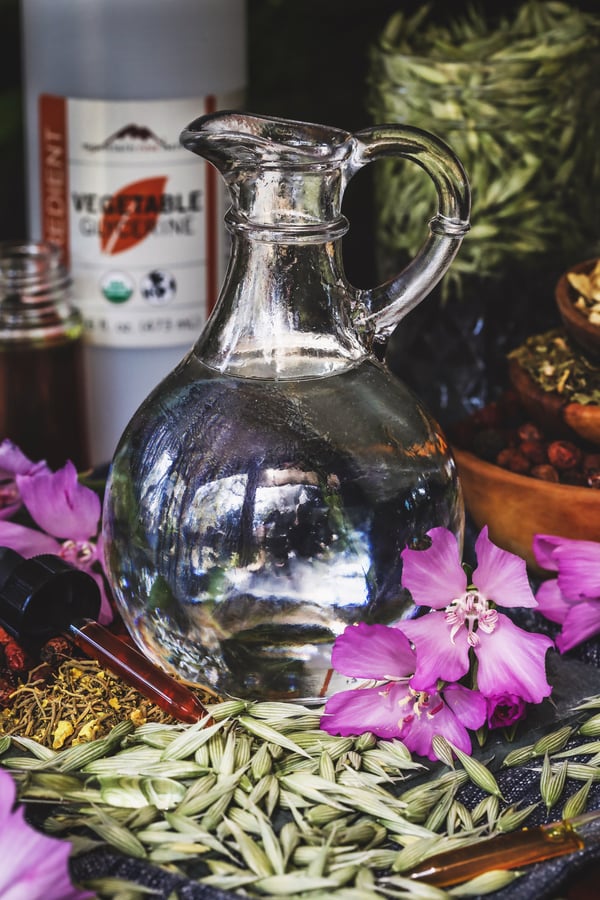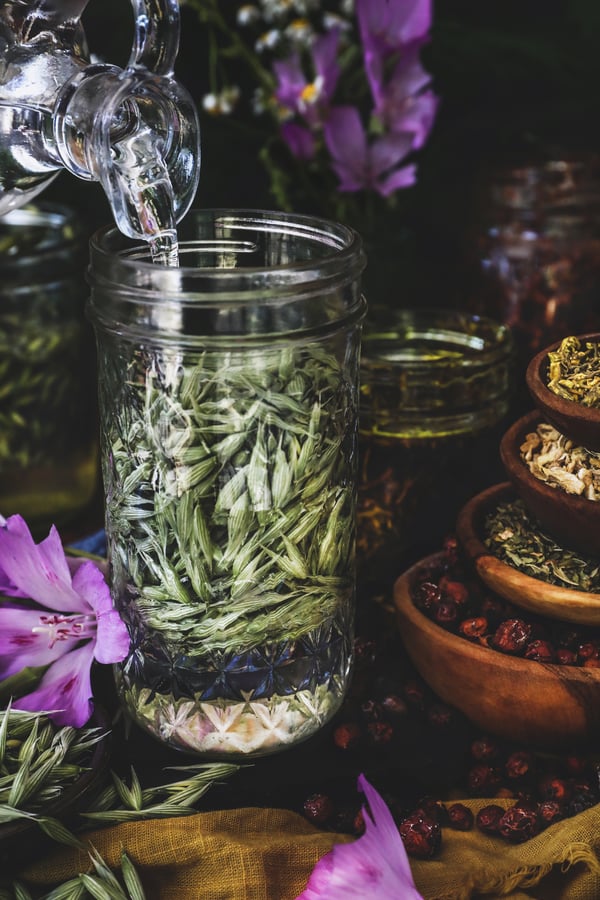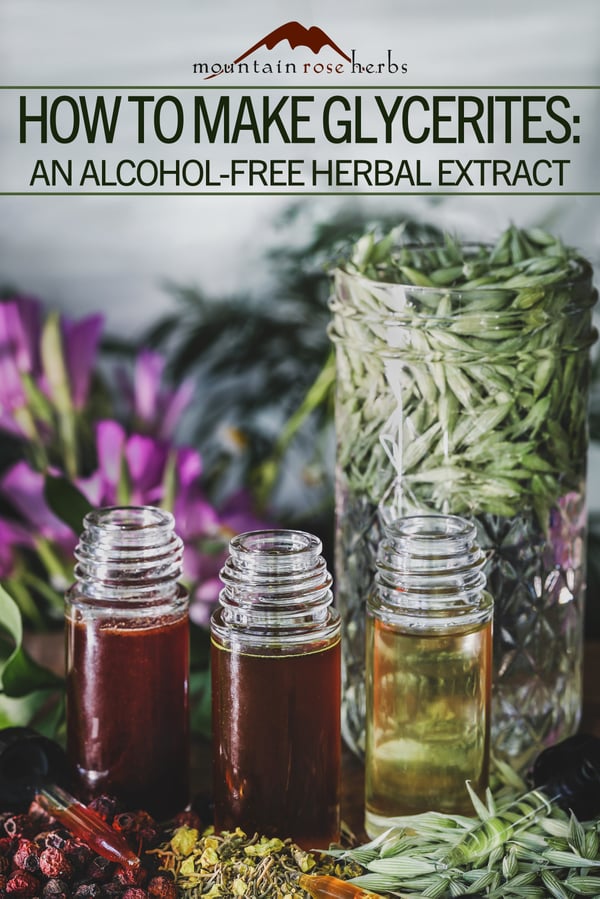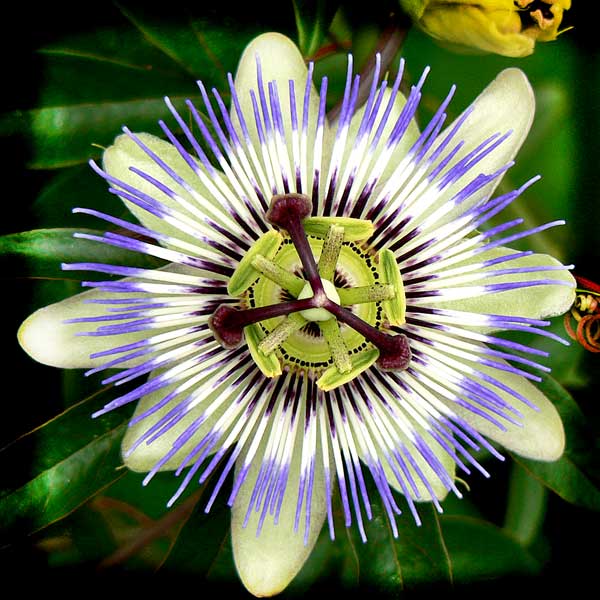Organic vegetable glycerine—known as glycerol and sometimes spelled glycerin—is an effective alternative to alcohol-based tinctures for extracting and preserving many beneficial herbal constituents. Of course, infusions, decoctions, and oxymels are ideal for many herbal wellness goals that don’t involve alcohol, but glycerites—the medicinal preparations made by mixing vegetable glycerine with herbs—can open new opportunities for teetotalers, parents, and those who do not wish to have alcohol. Bonus: it tastes good! Glycerol is a clear, colorless, odorless liquid with a viscous consistency and a pleasing sweetness that makes it a good base for botanical flavors.
What is vegetable glycerine?
Glycerine was first isolated in 1783 by chemist Carl Wilhelm Scheele, who described it as the “sweet principle of fat.” Glycerine can be derived from animal or plant sources and is often a byproduct of saponification when fats are treated with glycerides to be made into soap. Vegetable glycerine (glycerol) is made by heating triglyceride-rich vegetable fats like soybean, coconut, or palm oils under pressure with an alkaline catalyst and water in a process called hydrolysis. Hydrolysis causes the glycerine to split away from the fatty acids and mix with the water. Then the mixture is distilled to create the syrupy, sweet glycerol that is 99.7% pure vegetable glycerine.
The American Chemistry Council defines vegetable glycerine as a sugar alcohol—a carbohydrate with a chemical structure similar to sugar. There is no actual alcohol or sugar in sugar alcohols. Sugar alcohol products stimulate the “sweet” taste buds on the tongue and have about the same caloric density as sugar but have a lower glycemic index and a different metabolic pathway in the human body. Food manufacturers use sugar alcohols to add flavor without adding calories, which is why you often see sugar alcohol sweeteners in “diabetes-friendly” or “keto-friendly” food products.
In foods and drinks, vegetable glycerine acts as a humectant, sweetener, and preservative. It is often added to foods to help mix oil and water-based ingredients and to moisten a final product like marshmallows or shredded coconut. It helps to prevent ice crystals in frozen foods like low-fat frozen yogurts or ice cream. And it is a common ingredient in medicine capsules, toothpaste, cough syrups, heart medications, suppositories, and pharmaceutical drugs. You’ll also find it in hair conditioners, makeup, and skin moisturizers. Herbalists began utilizing the solvency action in vegetable glycerin for extracting botanical properties as early as the mid-1800s.
Is Vegetable Glycerine Safe?
The Food and Drug Administration considers vegetable glycerine to be generally safe for human consumption. However, it is important to remember that it is a form of manufactured sugar alcohol, which our bodies cannot fully absorb. Some people are allergic to glycerine. Also, sugar alcohols and other sugar substitutes like stevia and monk fruit can cause gastrointestinal discomfort (bloating, gas, diarrhea) and headaches or dizziness in some people. The amount that causes these symptoms varies by the individual. Although herbal preparations require only a small amount of glycerol, it should be consumed with consideration for the wellbeing of your gut. If you have not used formulations made with glycerol before, first take a small amount to gauge how your unique constitution and microbiome will respond.
Another factor to consider in using glycerol in herbalism is the source of your vegetable glycerine. Much of the readily available vegetable glycerine is made from palm oil. Reliance on palm oil has led to the massive deforestation of some of the world's most biodiverse forests, has created irreversible habitat destruction, and has exacerbated climate change. This is why Mountain Rose Herbs carefully sources organic vegetable glycerine derived solely from cultivated organic soy.
What is an Herbal Glycerite?
A simple herbal glycerite is made by soaking botanical material in a mixture of vegetable glycerine and water long enough for the glycerol to extract the active compounds from the herbs. Glycerites are gentler and not as potent as alcohol-based tinctures but make an excellent alternative and are a formulation of choice for children and adults who don’t drink alcohol.
Glycerol is particularly good at extracting constituents from fresh herbs, and you can use 100% vegetable glycerine for a glycerite made with fresh plant material. Be sure to muddle the mixture thoroughly! For glycerites made with dried herbs, you must add water to rehydrate the herbs and loosen up the botanical matter. We generally recommend using 75% glycerin and 25% water for preservation.
If you are not opposed to consuming alcohol, you can mix glycerite with a small amount of alcohol for more botanical extraction and a longer lifespan. Glycerites can also be mixed with alcohol-based tinctures to sweeten them and make them more palatable. Generally, you’ll want to use 75% tincture and 25% glycerite.
Remember that glycerites are often delicious, but they are not treats. It can be tempting to take too much too often. Keep them out of reach of children and pets. When used in moderation and administered by adults, they can be a wonderful, beneficial addition to your apothecary.
If stored properly in a cool, dark place, glycerites made with no alcohol have a shelf life of approximately 1-2 years (compared to 4-6 years for alcohol-based tinctures).
How to Make Herbal Glycerites with Fresh or Dried Herbs
Ingredients
- Organic herbs of choice, dried or fresh
- Organic vegetable glycerine
- Distilled water
Directions
glycerites with dried herbs:
- Grind dried botanicals if necessary to get the most surface area for extraction. Large leaves won’t do as well as crumbled ones.
- Fill a clean jar 1/2 full of the ground material.
- In a separate jar, combine 3 parts vegetable glycerine with one part distilled water (a 3:1 ratio = 75% glycerin and 25% water). Cap the jar and shake to thoroughly combine. Pour mixture over herbs in the jar to within one inch of the top to completely cover plant material.
glycerites with fresh botanicals:
- Chop the plant material thoroughly.
- Fill the clean jar nearly to the top, leaving room for vegetable glycerine.
- Pour undiluted glycerine over the chopped plant material to within one inch of the top to completely cover.
Remaining steps for dried and fresh herbal extractions:
- Use a long, clean spoon, knife, or chopstick to mix the plant material and vegetable glycerine and release any air bubbles. Add more glycerine/water mixture to dried herbs or 100% glycerine to fresh herbs as necessary to bring liquid back up to one inch from the top to completely cover plant material and stir again.
- Cap jar tightly. Label with name and ratio of ingredients along with date made.
- Set aside away from sunlight at room temperature to macerate for 4-6 weeks and shake daily to mix. Top off with more glycerine mixture (or straight glycerine if using fresh plant material) as necessary to keep plant material fully covered.
- After 4-6 weeks, strain glycerite through 3-4 layers of cheesecloth to remove all botanical material. Be sure to squeeze cheesecloth to get every last drop of glycerite.
- Bottle in a clean amber or cobalt glass bottle with an airtight lid. Label with ingredients, ratios, and date strained.
- Store in a cool, dark area.
Pro Tip: If you used very finely ground or powdered herbs you may need to double filter and/or strain through a coffee filter to ensure that there is no botanical material remaining in your glycerite.
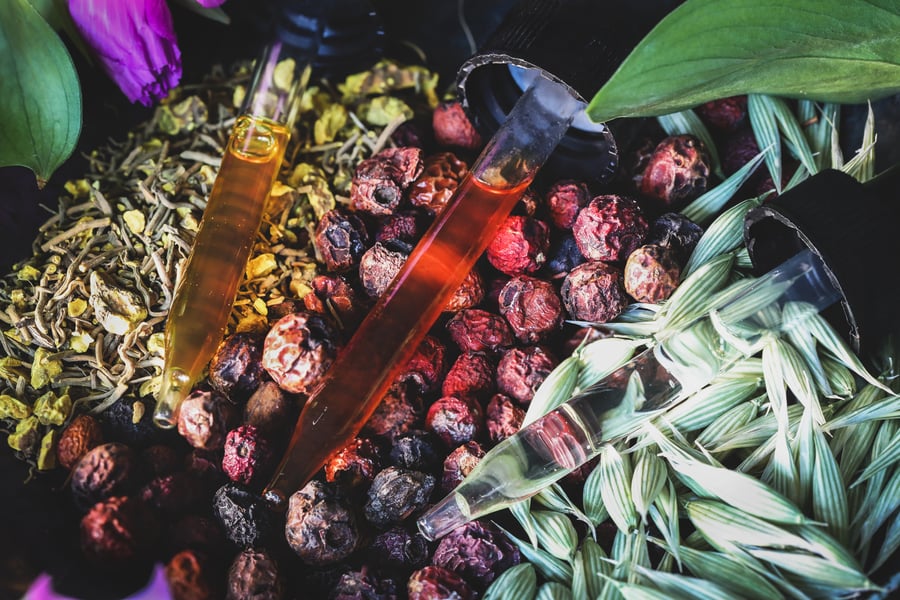
Best Herbs to Infuse in Glycerine
- Burdock root
- Chamomile flowers
- Cleavers
- Dandelion root
- Echinacea
- Elderflowers
- Fennel seed
- Ginger root
- Ginseng root (Forest Grown American)
- Goldenseal root
- Hawthorn berries
- Lavandin flowers
- Lemon balm
- Mugwort
- Mullein leaf
- Nettle leaf
- Oat tops
- Peppermint leaf
- Rose petals
- Skullcap
- Spearmint leaf
- Uva Ursi
- Valerian root
- Vitex berries
Want another no-alcohol herbal extraction method?
Check out this Herbal Oxymel Recipe & Benefits!

